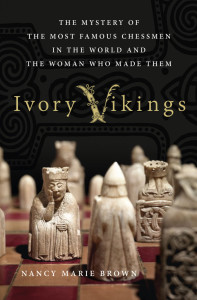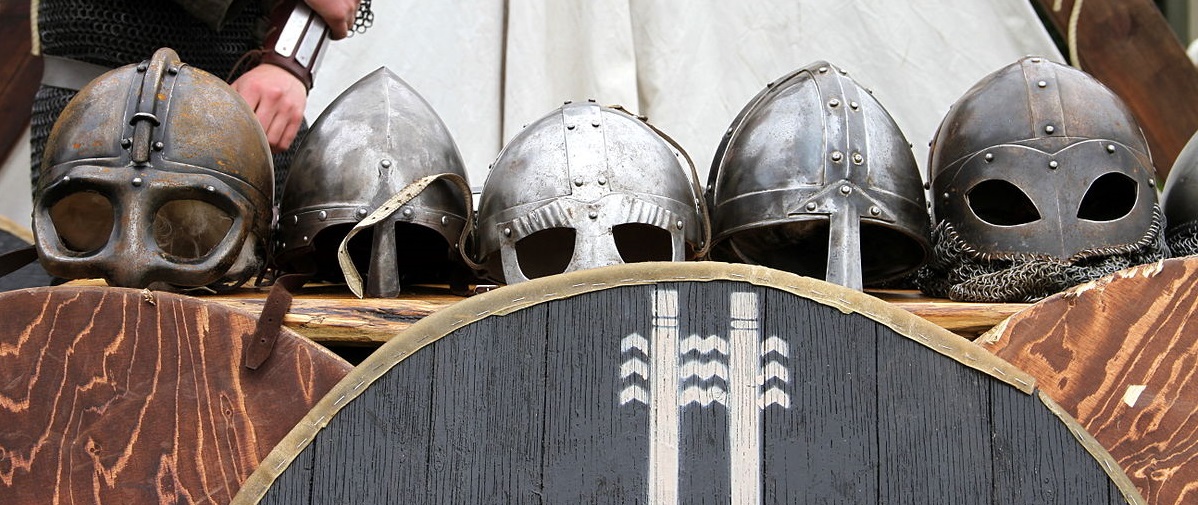by Nancy Marie Brown
Look at a map and remember the key position this area enjoyed from the 8th to the 13th centuries. From the beginning of the Viking Age in 793, the sea road connected these places we think of as far apart and culturally distinct. They include Norway and Scotland, England and Iceland, the Orkney Islands and Greenland, the Hebrides and Newfoundland. This empire of the North lasted almost 500 years. Until the Norwegian king signed the Treaty of Perth in 1266, finally ceding control of the islands off Scotland.
For those 500 years, trade in goods and ideas flourished, as a dip into art history reveals. The Lewis Chessmen are masterpieces of Romanesque art carved of Greenlandic walrus ivory sometime between 1150 and 1250. Because the sets contain berserk warriors , a reference to Norse mythology, experts agree they were made in the North. But where?
Brexit: a Scandinvian Perspective
When the United Kingdom voted to leave the European Union in June, Germany’s Angela Merkel “warned that Brexit represents a ‘deep break’ in EU history,” reported the Financial Times. The prime minister of the Netherlands, Mark Rutte, predicted “economic and political mayhem,” said the New York Times. While according to The Guardian the majority of EU member states “saw Brexit as a huge threat.”

However, Olafur Ragnar Grimsson, the outgoing president of Iceland said Brexit was “good news.” It presented an opportunity for Iceland, which is not a member state. “It is now obvious that here in the North Atlantic will be a triangle of nations that all stand outside of the European Union: Greenland, Iceland, Great Britain, Faroe Islands, and Norway. This key area in the North will be outside of the influence of the European Union.”
Look at a map, he suggested. This triangle of northern nations separates the United States from Europe. Consider, he urged, “the key position this area will enjoy in the 21st century.”
The Lewis Chessmen
Investigating the theory that the Lewis Chessmen were made in Iceland, around the year 1200, by a woman named Margret the Adroit. Margret was one of several artists in the employ of the fabulously wealthy Bishop Pall Jonsson. She carved luxury items out of walrus tusk, says The Saga of Bishop Pall, “so skillfully that no one in Iceland had seen such artistry before.”
But there are several other theories of where the Lewis chessmen were carved, and it’s unlikely we will ever solve the mystery. Art historians have compared the elaborate looping scroll-work on the backs of the kings’, queens’, and bishops’ thrones to four similar ivory carvings in museums in London and Copenhagen. One was found on an island near Trondheim, Norway, in 1715; the provenance of the other three is unknown. The scroll-work also resembles English manuscript illuminations. Also wood carvings from Norway and Iceland, and stone carvings from Norway, England, Scotland, and the border of Denmark and Sweden.
A British Museum catalog from 1909 concludes, “There seems no greater reason to assign them a Norse than a British origin. From an earlier period than the 12th century the relations between Britain and Scandinavia were very close; artistic influences were constantly interchanged, and common features of ornament are found on both shores of the North Sea. The result is that it is often difficult to say to which side a given object belongs.”
Recognizing this fact, some art historians today prefer to talk of a “North Sea Style” rather than trying to assign art of this time to one nation. Perhaps a new North Sea Style will arise post-Brexit, when Iceland and its northern neighbors seize their opportunity.


